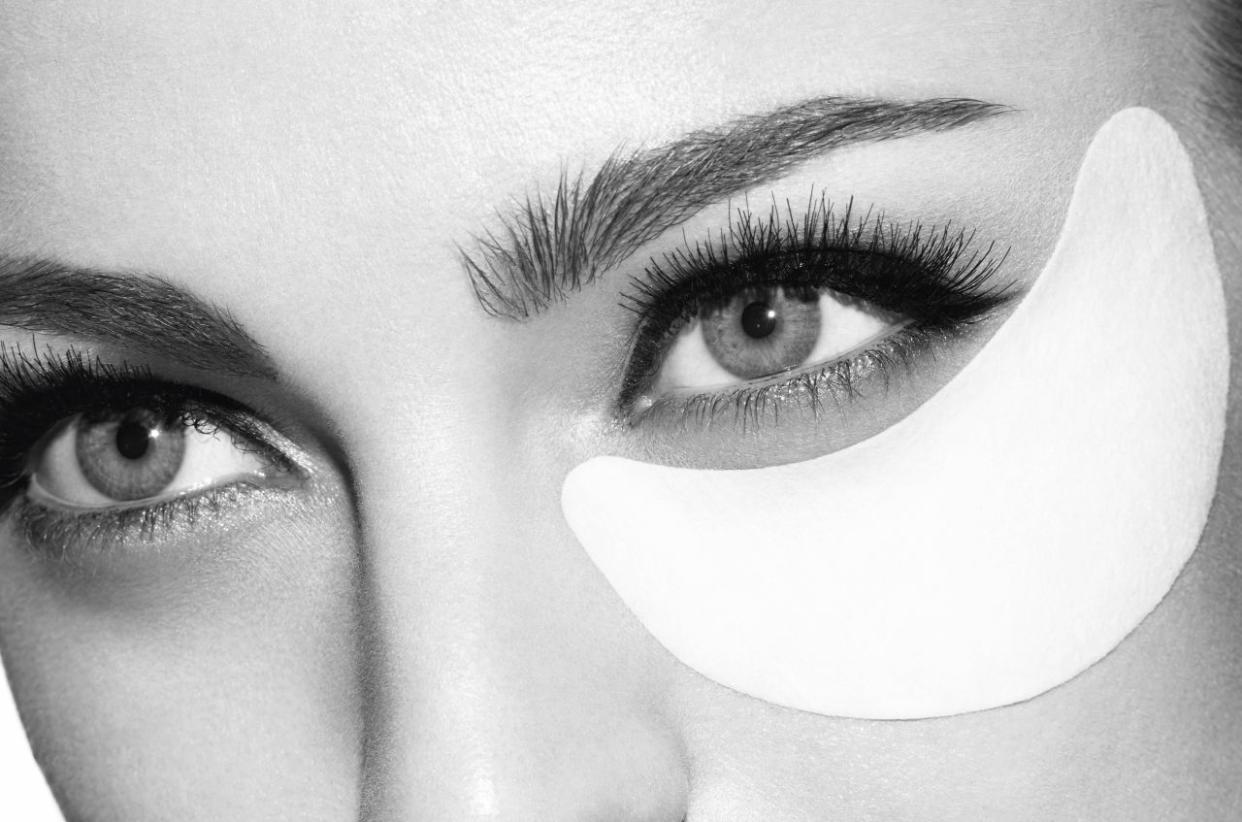The Truth About Treating Dark Under-Eye Circles (Hint: It’s Not in Your Kitchen)

Please listen to the pros on this one. (Photo: Getty Images)
Those of us who live with dark under-eye circles know the struggle is real. So, many of us were excited when a beauty vlogger recently demonstrated a new technique: using buttermilk and turmeric to brighten dark circles — or, more specifically, to “get rid of dark circles foreverrrr,” according to her Instagram.
But shortly after the video went viral, it came under fire by skin- and eye-care professionals. In an interview with Seventeen, Mark Jacquot, OD, clinical director at LensCrafters, warned that turmeric — a potent orange spice — can damage the delicate skin around the eye and is definitely not on the U.S. Food and Drug Administration’s approved list of ingredients for eye cosmetics. (We knew it was too good to be true!)
More bad advice hit the Web recently, this time from YouTube vlogger Darshika Patel, who demonstrated making a baking soda paste for dark circles. This tip is instantly suspect, as Patel has to note you should not rub the harsh powder in, as it could tear your skin. Also, Joshua Zeichner, MD, told Refinery 29 that “baking soda has an alkaline pH, while the skin’s natural pH is slightly acidic, which is necessary for healthy skin-cell functioning. Increasing the pH can lead to irritation and impairment of the skin barrier.” We’ll pass, thanks.
Related: Is Contouring Over?
So what are the smartest and safest options for the raccoon-eyed among us? There doesn’t seem to be a guaranteed way to permanently eradicate dark circles, but there are two basic options when it comes to concealing them: cosmetics and cosmetic procedures.
Cosmetics
“Dark under-eye circles are the No. 1 beauty complaint when women sit in my makeup chair,” says celebrity makeup artist David Maderich, who claims his “secret weapon” is color correctors, which basically follow the turmeric color theory — using yellow and orange to offset blue — but without the irritating side effects. Not to be confused with concealers, color correctors are yellow- or orange-based creams applied before concealer. “I love the Bobbi Brown Correctors because they come in various tones and hues to match every skin tone from pale to dark.”
Maderich recommends applying the product with a small, flat concealer brush, using your finger to tap the edges. Next, using the same brush, blend a light coat of skin-matching concealer over the corrector. “To set for all-day wear, I use a light dusting of translucent loose powder. I love Face Atelier Ultra Loose Powder.”
If you’d rather not try your hand at correctors, New York makeup artist Lana Gersman has another technique. “Contrary to [common knowledge], people with dark circles should actually use a concealer a couple of shades darker — not lighter — than their skin tone,” says Gersman. “Then use a sheer, loose powder to match.” Gersman says that famed makeup artist Eve Pearl devised this theory and is known for her salmon-based concealers, which “work amazingly on dark circles.”
Related: Does Thermage Hurt?
Cosmetic Procedures
Juvéderm injections are the closest thing to a “cure” for concealing dark under-eye circles — and the procedure is remarkably effective, according to Alexander Rivkin, MD, of Westside Aesthetics in Los Angeles. “The first thing I want to know when patients come into my office is how much of the darkness is due to pigment — the skin around the eye being darker than the cheek — and how much is due to volume loss in the tear trough (the area under the eye), which can happen as we age,” says Rivkin, who’s been practicing this procedure for 12 years. He says it’s usually a combination of both, and he’ll tailor treatment to each patient.
The procedure involves using very fine needles to inject a specially prepared form of Juvéderm, a smooth dermal filler made of hyaluronic acid, into the affected area, and discomfort is minimal (squeamishness toward needles notwithstanding). The treatment can last from two to seven years or more, he notes, and typically ranges from $1,000 to $3,000. The procedure is also pretty harmless, with slight, temporary bruising being the most common side effect.
“Patients leave our office looking 10 years younger!” Rivkin proudly proclaims. But he assures that if you’re not pleased with the results, Juvéderm is actually reversible. Who knew?
Read This Next: If You Have Sensitive Skin, You Cannot Skip This Skin Care Step
Let’s keep in touch! Follow Yahoo Beauty on Facebook, Twitter, Instagram, and Pinterest.

